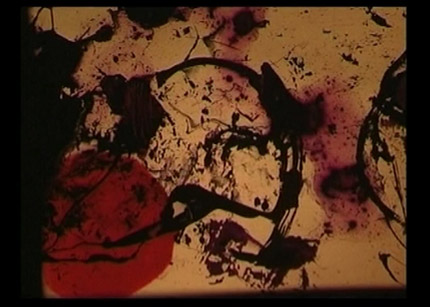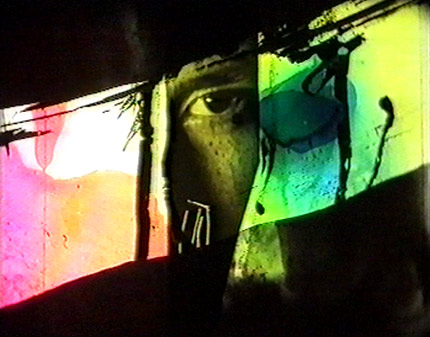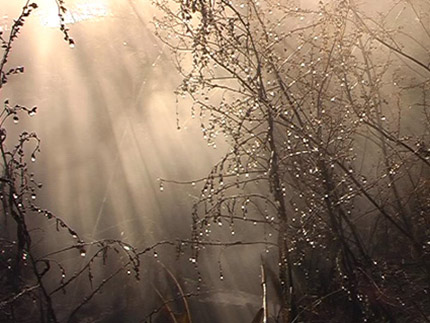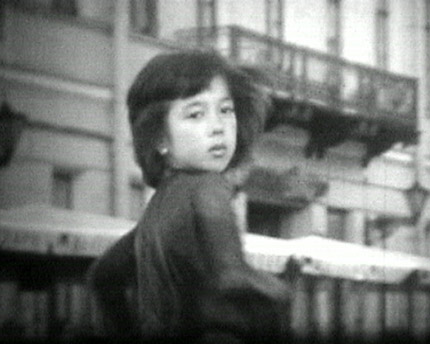


The history of Russian experimental cinema started in the 1920s, when the cinematic experiments of Sergei Eisenstein, Dziga Vertov, Lev Kuleshov, and Alexander Dovzhenko shook the world. However, with the consolidation of totalitarianism in Soviet Russia and the reinforcement of control over domestic film production (Lenin: “Of all the arts, cinema is for us the most important.”) all cinematic experimentation ground to a halt and filmmakers were subjected to organised political persecution. The avant-garde of the New Soviet Cinema fell victim to the System.
Limited experimentation during the “thaw” of the 1960s and 1970s failed to break the wall of totalitarian control. Only with the weakening of the regime in the mid- 1980s (and with administrative changes in the film production system) could Russian artists and filmmakers leave state-controlled studios and establish independent studios of their own.
In the early 1980s a new experimental movement was formed — “Parallel Cinema” (“Paralel’noe Kino”) which united radical film and video artists working outside of the established official system. It was represented in St. Petersburg (then Leningrad) by Yevgeniy Yufit (“the father of Necrorealism”), Yevgeniy Kondratiev (“Debil”) and Andrei Mertvyi, and in Moscow by the Aleinikov brothers (who organised the “Cine Fantom” film magazine and film club), Boris Yukhananov and others. However, the economic instability and political turbulence of the late 1980s undermined both the independent studios and the official production houses. It took five years of shock therapy for Russian cinema to pull itself together again and produce new work.
The dilemma facing Russian experimental cinema today is not easy to resolve. Economic and political changes are modifying all levels of activity — artistic, social or otherwise. But despite everything, the experiment continues.
Stekliannoe pole (“The Field of Glass”) is the continuation of a series I started in 1999 dedicated to the exposition of new independent and experimental works by Russian film and video artists.
Aleksander Gladishev’s Color time (2006, restored version) and Sonia Nelubina’s Horsa-la (2001) are hand-painted directly on to celluloid. Both works are united by a remarkable play of light, colours, lines and movements. By animating the simplest patterns of an object which came to our lives with the expansion of computer technology, Anton Khlabov’s Sun in the Box (2006) creates a mysterious world of signs which doesn’t need decoding; instead it invites viewers to a simple participation during the screening. Alexei Kruchkovsky, in his turn, designs a more visually intense picture in his work Dead Fingers Talk (2007) by using video artefacts and distortions and by manipulating the signal itself.

Sonia Nelubina: Horsa-la (2001)
Boris Kazakov’s Alphabet (2004) is a visualisation of the Russian alphabet, the most important sign system of the Russian language. Dmitriy Trofimov, who started his career as a filmmaker in the 1990s, and Anzhela Ashihmina, his co-author, also have used the collage technique, but in video. Ashihmina-Trofimov’s short films France: a post-card (2005), Petra: a post-card (2005) and Morocco: a post-card (2006) use Ashihmina’s “home videos” from her travels around the world. Trofimov transforms images and edits them into the very lyrical, poetical and intimate descriptions of a person in a concrete place at a concrete time. Putting the films together under one name, “postcards”, the artists are bringing back to the audience those times when people were engaged in this almost forgotten form of communication, sending postcards to each other to share their excitement and experience of new places. And just like those written texts — short, poetic and emotional — the films are filled with brief moments of happiness and the joy of being somewhere else.

Boris Kazakov: Alphabet (2004)
The work Room 3806 (2004), by the video-maker Kirill Shuvalov and the composer Vladimir Rannev, was conceived as a synchronisation of electronic music and pulsating images of static photographs used in German medical books from the 1920s aimed at popularising ultra-violet and quartz radiation treatment among children. These eerie retouched photographs are provocative in their nudity and obscurity: the children are perceived as samples of medical testing, reminiscent of experiments in cloning and genetic engineering. A precise combination of picture and sound creates an atmosphere of tension and unexpectedness which evokes in the audience apocalyptic feelings, thoughts of concerns for our collective future, worries about the consequences of technology and the possible impact of radiation.
Leonid Tishkov draws on his experience of being a painter, writer and book illustrator to reconstruct the world of his fantastic creatures on a screen. In his film Deep Sea Diver — Watermelon (2006), he and his co-author Dmitriy Samsankov show the viewer the birth of a deep sea diver, describing him with the following words: “the velvet of their skin — diving-suits — reminds us of teddy bears, the beloved toy of children; a long hose is an infinite umbilical cord, never detached, which accompanies us all our lives, binding us with the earth and eternity”. In her work Gas (2005) the young video-maker masha_sha successfully uses a parallel cutting technique in order to convey a feeling of imminent danger to images which are not connected with each other. The simple confrontation of shots brings to life a third meaning, and in that way proves the accuracy of Lev Kuleshov’s and Sergei Eisenstein’s montage theory. Shot with a still camera “Cannon” and skillfully edited, Dmitriy Lavrenenko’s Metr:oo (2006) depicts the world of the Moscow underground, with its architecture, speed, rhythm, emotions, feelings and lives. His camera is almost always on the move, only rarely stopping to rest its gaze on close-ups of faces, bodies and distinctive details.

masha_sha: Gas (2005)
I also use reality as a source of inspiration to create poetical filmic space in my two works, Untitled #1 (2005) and Another Place and Yet the Same (2005). The films are filled with images and lyrical interpretations of objects and things which surround us every day: A dreary city; a street dancer performing a harsh, passionate and seductive dance; a face of a child gazing openly at the camera (and thus, at the audience); landscapes, reflecting the beauty and greatness of nature: a forest, a lake, a sky, twilight, the moon… — things which have been around us for so long, forgotten and unnoticed for so long. The impressionistic sequences of the films resemble dreams more than linear stories and create an impression of recurrence, repetition and the continuous rebirth of life with all its difficulties, complications, horrors and beauties.
Masha Godovannaya

Masha Godovannaya: Untitled #1 (2005)
Stekliannoe pole — Russian Experimental Films and Videos from 2001 to 2007
curated by Masha Godovannaya
Boris Kazakov: Alphabet (2004, 4’)
Dmitriy Trofimov & Anzhela Ashihmina: France: a post-card (2005, 4’)
Leonid Tishkov & Dmitriy Samsankov: Deep Sea Diver — Watermelon (2006, 7’)
masha_sha: Gas (2005, miniDVD, 2’)
Aleksandr Gladishev: Color time (2006, restored version, 9’)
Anton Khlabov: Sun in the Box (2006, silent, 38’’)
Masha Godovannaya: Untitled #1 (2005, 4’)
Dmitriy Trofimov & Anzhela Ashihmina: Morocco: a post-card (2006, 1’05’’)
Alexei Kruchkovsky: Dead Fingers Talk (2007, silent, 5’22’’)
Dmitriy Lavrinenko: Metr:oo (2006, 10’)
Sonia Nelubina: Horsa-la (2001, 4’)
Kirill Shuvalov & Vladimir Rannev: Room 3806 (2004, 5’)
Dmitriy Trofimov & Anzhela Ashihmina: Petra: a post-card (2005, 2’)
Masha Godovannaya: Another Place and Yet the Same (2005, 35’)
Total duration: 93 minutes.
Kiasma Theatre on Saturday, 17 November at 3 pm.
Masha Godovannaya (1976–) is an experimental filmmaker and curator. Born in Moscow, she studied music, book editing and publishing in Russia before majoring in film production at Brooklyn College in New York. She worked at Anthology Film Archives as a researcher and film/video curator for several years and completed a number of films which have been screened at international film festivals. She now lives in St. Petersburg, Russia.
Masha Godovannaya’s lecture Stekliannoe pole: Reflecting the History of Experimental Cinema in Russia
at the Academy of Fine Arts (Kasarmikatu 36) on Friday, 16 November at 2 pm.